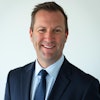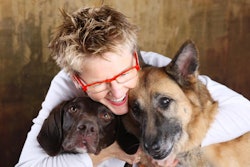
Has the continued growth of premium pet food, in both sales and product offerings, been spurred by the US pet specialty channel, or has premium pet food’s success driven the pet specialty channel? It may just be a chicken and egg question – as in, which came first, the chicken or the egg?
Or perhaps it doesn’t really matter as much as the bottom line: Sales of pet food in the US pet specialty channel have reached US$8 billion this year to date, and most of the sales are coming from products labeled with the buzz words that combine to create the premium pet food category: natural, grain-free, limited ingredients, raw frozen, freeze-dried, dehydrated, novel proteins, small breeds. Plus, some newer terms starting to make their mark: mixers, toppers, humane, sustainable, and family owned and operated.
This snapshot of a consumer product category and distribution channel that combined forces at seemingly the perfect moment in time comes courtesy of Maria Lange, business group director of GfK, in a webinar entitled “Emerging pet food specialty retail trends to watch.” Her data show that from 2011 to 2016, pet food sales in the US pet specialty channel increased 29 percent, from US$6.2 billion to today’s US$8 billion, and the average price per pound has risen 34 percent, up to US$2.40. (That comes from a 40 percent increase in the average price per pound for complete pet diets and a 67 percent rise for pet treats.) There are now 559 pet food brands on the market in that channel, an increase of 52 percent since 2011, and they have launched 2,880 new products in the past year (up 12 percent).
So far, this proliferation of brands and products has been striking all the right notes, though Lange did note the sales growth rate slipped a bit in the second quarter of 2016, down to 2.8 percent after a healthy 4.6 percent earlier in the year. Sales increased 4.6 percent in 2015 after a similar dip (also 2.8 percent) in 2014, compared to heady growth of 10.4 percent in 2012 and 6.3 percent in 2013.
Lange said one reason for the slowing growth is likely the rise of “value natural” and private-label pet foods in the specialty channel. The former segment is growing at 12.3 percent and private label at 8.9 percent, and together, the segments account for 7 percent of pet food sales in pet specialty, up from 2 percent in 2011. These products are priced 20 percent lower than premium pet foods, which not only affects dollar sales growth – especially since volume (poundage) is declining at -1.7 percent – but also bears watching in terms of premiumization’s continuing strength and influence.
Premium pet foods still reign
Still, thanks to juggernaut segments like natural and grain-free, combined with other, smaller segments showing fast growth, premiumization continues to reign in pet food, according to GfK’s data. “Natural has become the basis, the foundation of pet food in the pet specialty space,” Lange said, citing its 70 percent market share. Its sales are still growing at 7.6 percent year over year, now reaching US$5.6 billion. Similarly, grain-free has a 37 percent market share, reaching US$3 billion and enjoying 20.2 percent annual growth.
“Natural” and “grain-free” often overlap within the same products; 54 percent of the natural category is now comprised of grain-free pet food, Lange said. In fact, grain-free is the driver of growth for natural; without it, the natural category would be declining in sales. Yet despite that, and even with the rise of the value natural segment, the average price per pound for all natural pet foods has hit US$2.77, with grain free at US$3.07.
Smaller segments are also making their mark. For example, Lange cited the rapidly growing category of pet foods for small and toy breed dogs (which is also contributing to the decline in poundage). Growth rates range from 4.9 percent (treats) to 6.5 percent (dry food) to 8.1 percent (wet food), totaling to US$675 million, up from only US$389 million in 2011. In tandem, the number of pet food items for small dogs has increased from about 500 in 2011 to 939 to date for 2016, with most in the dry sub-category (504), followed by treats (306).
Another small yet rising category is limited-ingredient diets. They now total US$683 million in sales, accounting for a 6.8 percent market share in US pet specialty and increasing year over year at 12.5 percent. Dry dog food makes up the majority of the category, 82.5 percent, and is growing 13 percent a year. Wet cat food is also increasing rapidly, at 26 percent, albeit from a much smaller base. Lange predicted that this category will continue to grow, possibly abetted by or expanding into the concept of ingredient transparency, in which a product’s packaging prominently displays the low number of ingredients.
Raw frozen, freeze-dried and dehydrated pet foods also continue to grow. Frozen sales are increasing nearly 27 percent a year, though from a total of only US$97 million and a 1.2 percent share of pet specialty. Lange commented that this category probably would be growing even faster if not for all the recalls of frozen pet foods in 2015. Still, the number of pet stores selling frozen has increased from 38 percent in 2011 to 63 percent today.
Freeze-dried pet foods have increased their distribution even further, with more than double the number of pet stores carrying them now in 2016 versus 2011. Lange attributed the wider adoption to the rise of “kibble plus” products: dry pet food mixed with freeze-dried or dehydrated bits. Overall, whether comprising part or all of complete pet diets, the freeze-dried and dehydrated formats now total US$86 million in sales, with freeze-dried accounting for $US61 million and growing 45.5 percent a year. There were 75 new freeze-dried pet food products launched in 2015, compared to only 37 in 2014.
Venturing even farther into newer formats, the meal enhancer category – mixers and toppers, whether preserved, wet or liquid – is another rapid riser, with more than 10 times growth (US$3.5 million to US$27.8 million) in just the past three years. The number of items launched has nearly tripled, from 66 in 2013 to 164 to date this year. Not surprisingly, most of these products are for dogs.


















